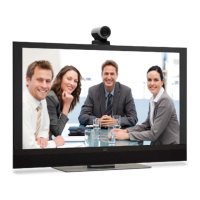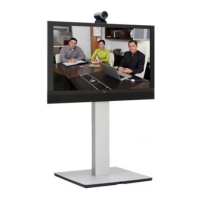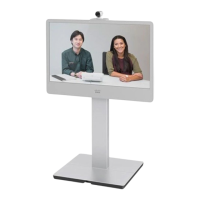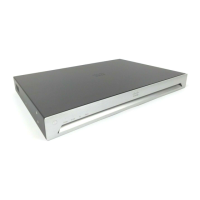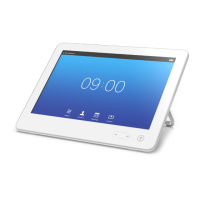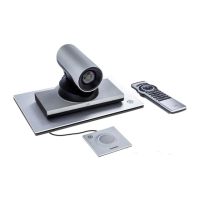D15335.02 Cisco TelePresence MX700 and MX800 API Reference Guide CE8.0, FEBRUARY 2016.
Copyright © 2016 Cisco Systems, Inc. All rights reserved. 85
Cisco TelePresence MX700 and MX800
API Reference Guide
xConfiguration Video Output Connector [2] CEC Mode
This setting only applies to MX800 Single.
This video output (HDMI) supports Consumer Electronics Control (CEC). When this setting is
On (default is Off), the system will use CEC to set the monitor in standby when the system itself
enters standby. Likewise the system will wake up the monitor when the system itself wakes
up from standby. For this to happen, the monitor that is connected to the output must be CEC
compatible and CEC must be configured on the monitor.
Note that the different manufacturers uses different marketing names for CEC, for example
Anynet+ (Samsung); Aquos Link (Sharp); BRAVIA Sync (Sony); HDMI-CEC (Hitachi); Kuro Link
(Pioneer); CE-Link and Regza Link (Toshiba); RIHD (Onkyo); HDAVI Control, EZ-Sync, VIERA Link
(Panasonic); EasyLink (Philips); and NetCommand for HDMI (Mitsubishi).
Requires user role: ADMIN
Default value: Off
USAGE:
xConfiguration Video Output Connector n CEC Mod e: Mode
where
Mode
: Off/On
Off: Disable CEC control
On: Enable CEC control
xConfiguration Video Output Connector [1..3] MonitorRole
The monitor role describes which video streams will be shown on the monitor connected to this
video output connector. Together the Video Monitors setting and the MonitorRole settings for
all outputs define which layout (video streams) will be shown on each monitor.
Requires user role: ADMIN
Default value: Auto
USAGE:
xConfiguration Video Output Connector n MonitorRole: MonitorRole
where
MonitorRole
: Auto/First/Second/PresentationOnly/Third/Recorder
Auto: The system will detect when a monitor is connected, and a monitor role (First,
Second, Third) that corresponds with the Video Monitors setting will be assigned
automatically.
First/Second/Third: Define the role of the monitor in a multi-monitor setup. In a single-
monitor setup, there is no difference between First, Second and Third.
PresentationOnly: Show presentation video stream if active, and nothing else. Monitors/
outputs with this monitor role are disregarded by the Video Monitors setting.
Recorder: Show all participants, including the local main video (self-view). If active, also
show the presentation. Monitors/outputs with this monitor role are disregarded by the
Video Monitors setting.
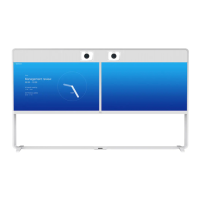
